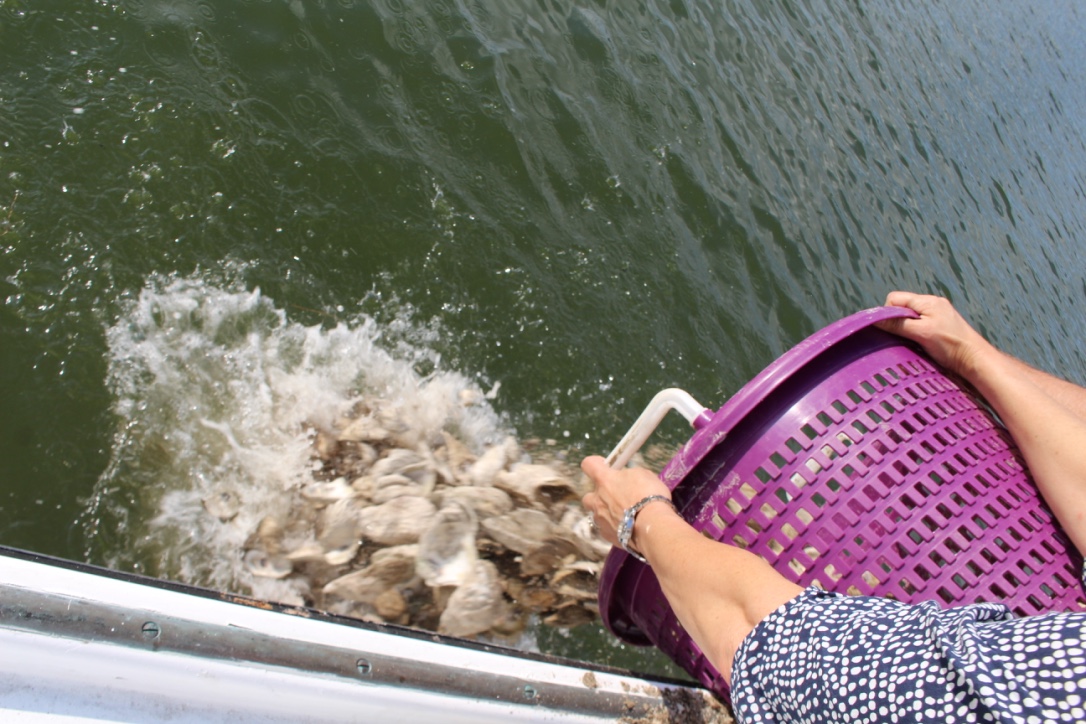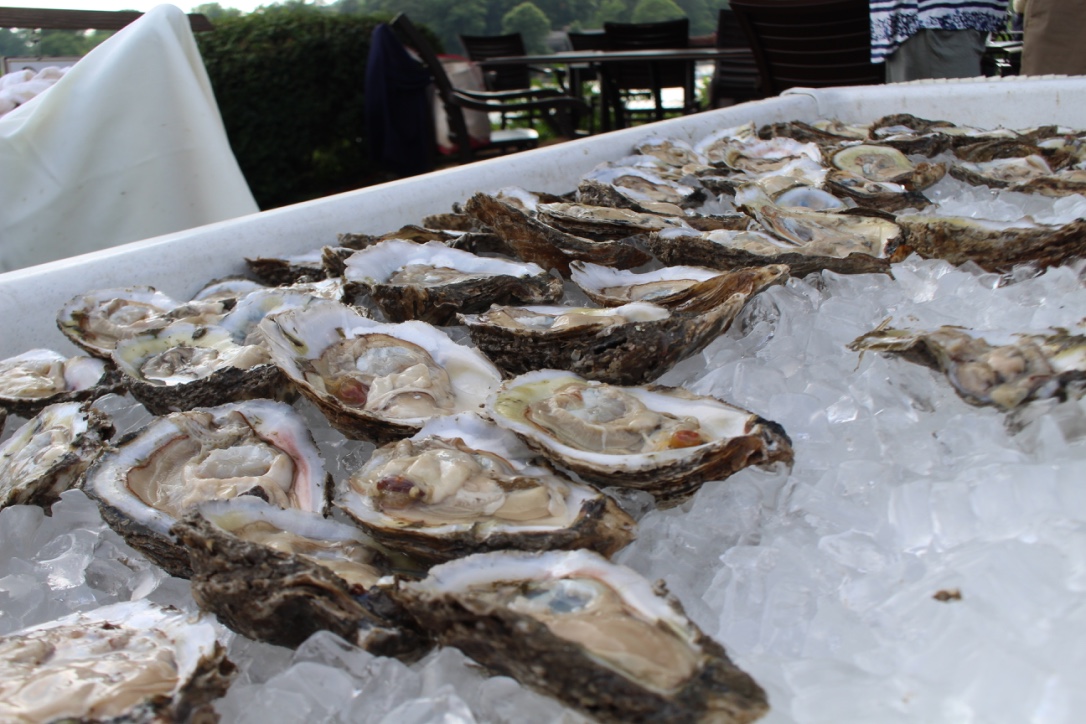New Oyster Sanctuary Created Called the Ellery Kellum Rock!
 Oysters are not only our favorite treat, but they are a vital part of keeping our rivers, creeks and the Bay clean. One oyster filters 50 gallons of water each and every day. The cleaner the water, the higher chance oysters and other seafood such as crabs and fish can thrive and the more fun we can have in Virginia’s Oyster Country.
Oysters are not only our favorite treat, but they are a vital part of keeping our rivers, creeks and the Bay clean. One oyster filters 50 gallons of water each and every day. The cleaner the water, the higher chance oysters and other seafood such as crabs and fish can thrive and the more fun we can have in Virginia’s Oyster Country.
So, how do we get more oysters in our waters? By encouraging them to grow on old oyster shells–the shells you discard after enjoying then raw, roasted, or fried!
Don’t Chuck that Shuck
Since 2013, students, staff and volunteers of Virginia Commonwealth University’s Rice Rivers Center have been helping oyster lovers play a role in cleaning the day. They work with nearly 60 restaurants and oyster companies around the state that help to collect oyster shells.
“We wanted students to have a tangible experience out in the community and throughout the state, but we had no idea this pilot project would grow so large,” said Todd Janeski, Director of the Oyster Shell Recycling Program at Virginia Commonwealth University’s Department of Life Sciences and Rice Rivers Center.
VCU students and volunteers also collect shells from 30 drop off locations around the state, including 18 at Harris Teeters in Virginia. Eventually all the recycled shells all make it right back to Virginia Oyster Country. First, VCU students age them in storage for nearly a year. Then, the shells are placed in seeding tanks where spat (baby oysters) attach themselves to the shells. Each shell might help bring new life to 10 to 15 spat. ,
“We touch the shell during the whole cycle” Janeski said. “When we deliver them to our designated reefs in the water, those shells help maintain both the wild and the farmed oysters living and growing out there.”
 Ellery Kellum Rock at the Tides Inn
Ellery Kellum Rock at the Tides Inn
Thanks to a new partnership, VCU will be able to bring oysters to a reef in Carter’s Creek, accessible via the Tides Inn. A dedication ceremony for the reef was held on June 15, 2017. Kellum Seafood donated the oyster reef lease to the Friends of the Rappahannock. It will be called Ellery Kellum Rock in honor of Ellery Kellum, the founder of Kellum Seafood.
“We’ve got actual records where they worked this lease in the 20s,” said Tommy Kellum, the great grandson of Ellery Kellum and owner of Kellum Seafood. “We’re glad that we have the ability to prove that the industry, academia, ecological groups, and legislators, can all get together and do something for the good of the Commonwealth.”
After enjoying fresh oysters, Kellum, Janeski, and more hopped on deadrise boats with containers full of recycled shells to place on the reef. Everyone was invited to take part and throw them in the water. There are at least 1,500 bushels of shell on the reef and that number will grow as will the wild and farm raised oyster population in the area. The oysters in Ellery Kellum Rock will not be harvested so they can continue to improve the local water quality and encourage growth in nearby reefs harvested by companies including Kellum.
“I’ve got a “Don’t Chuck that Shuck” bumper sticker on the back of my car. I’ve been a believer since day one, said Molly Ward, Virginia’s secretary of natural resources. “The important thing about this event tonight is the collaborative effort that it took to make this happen for the greater good, not only the health of river, the health of the bay, the health of the oysters, but also economic development and the health of our oyster industry.”
The reef is plainly visible via kayak, canoe, or paddle board, available via the Tides Inn. VCU, Friends of the Rappahannock and Kellum Seafood will be working closely with local organizations to host events to help plant more oyster shells along the reef and help visitors learn about the region.
Read more about Kellum Seafood and their family history in this blog post on Virginia Oyster Trail.



